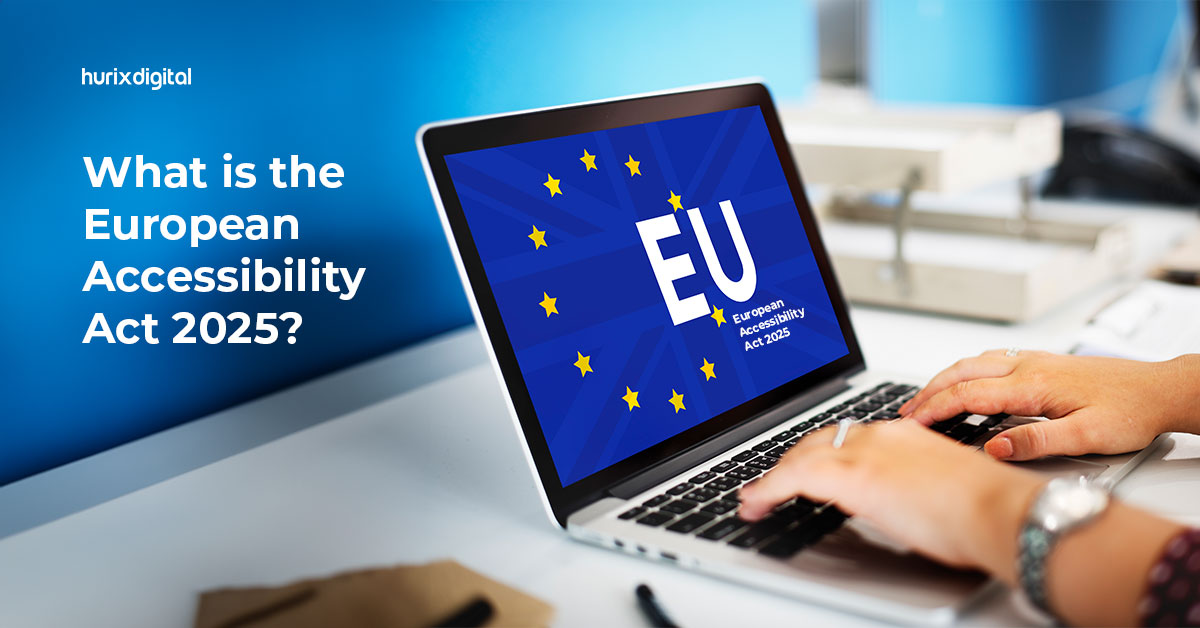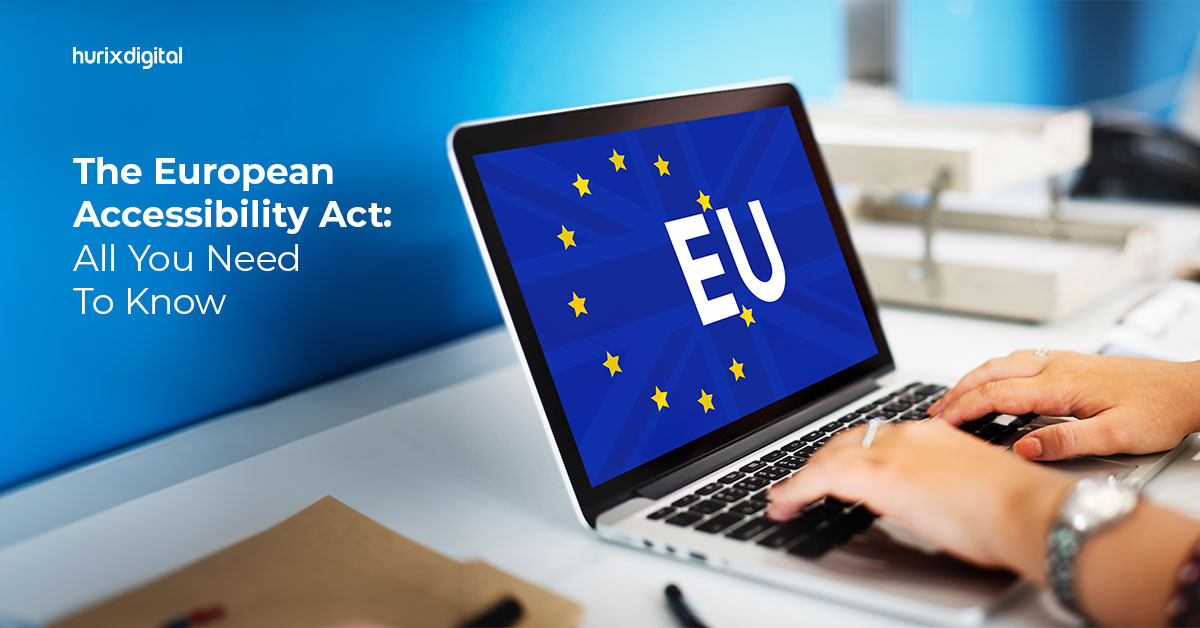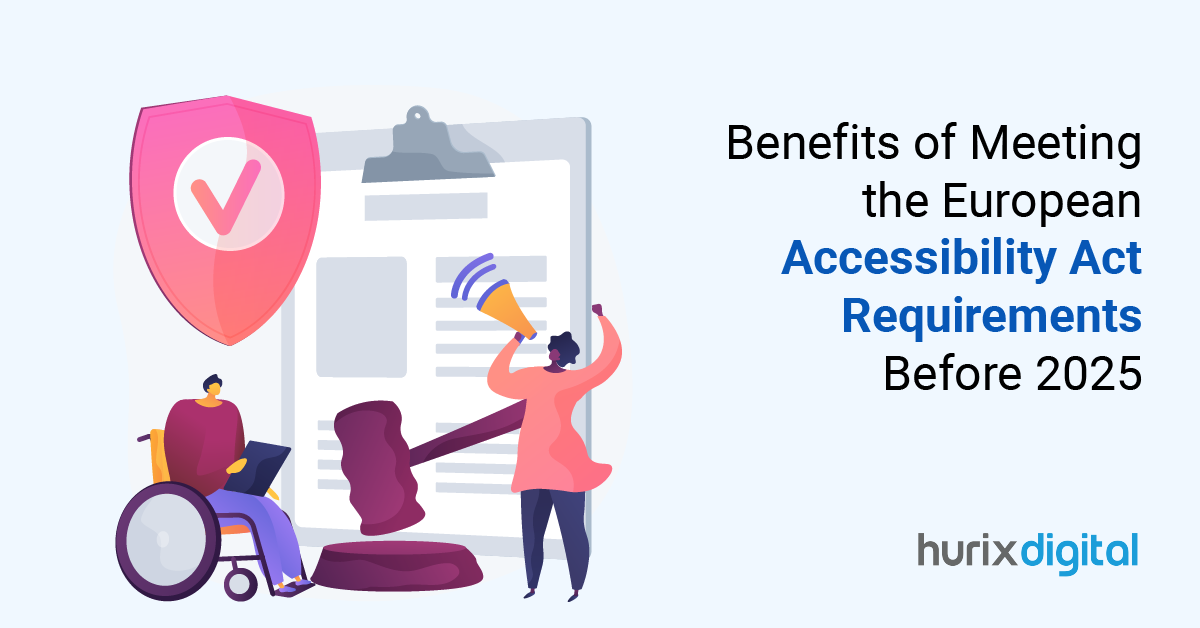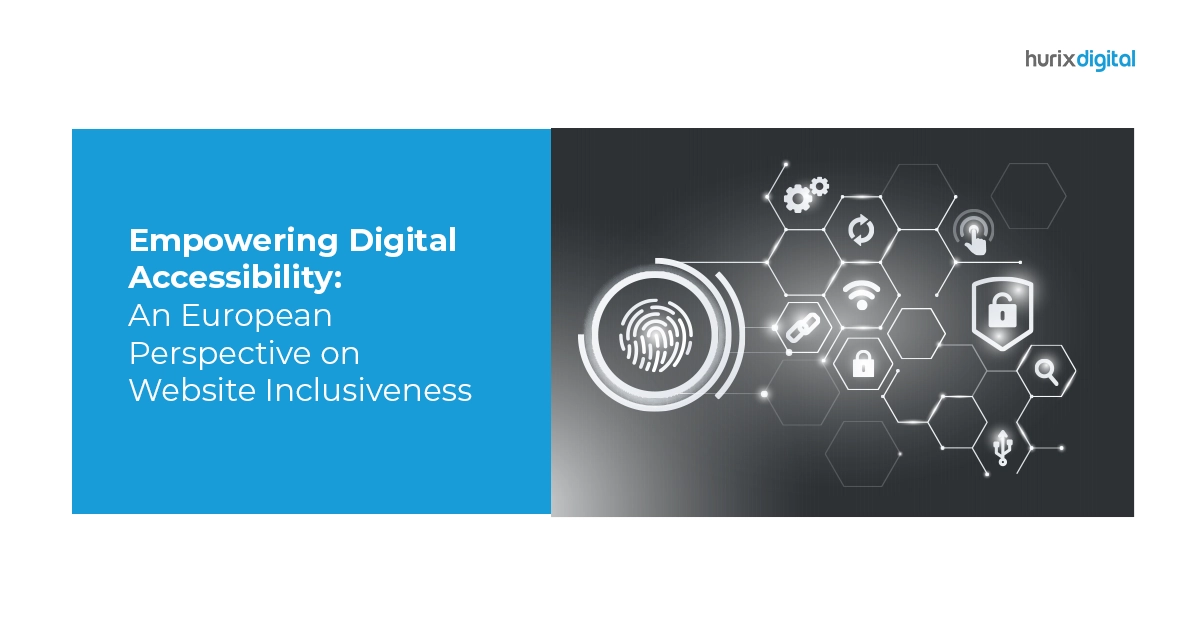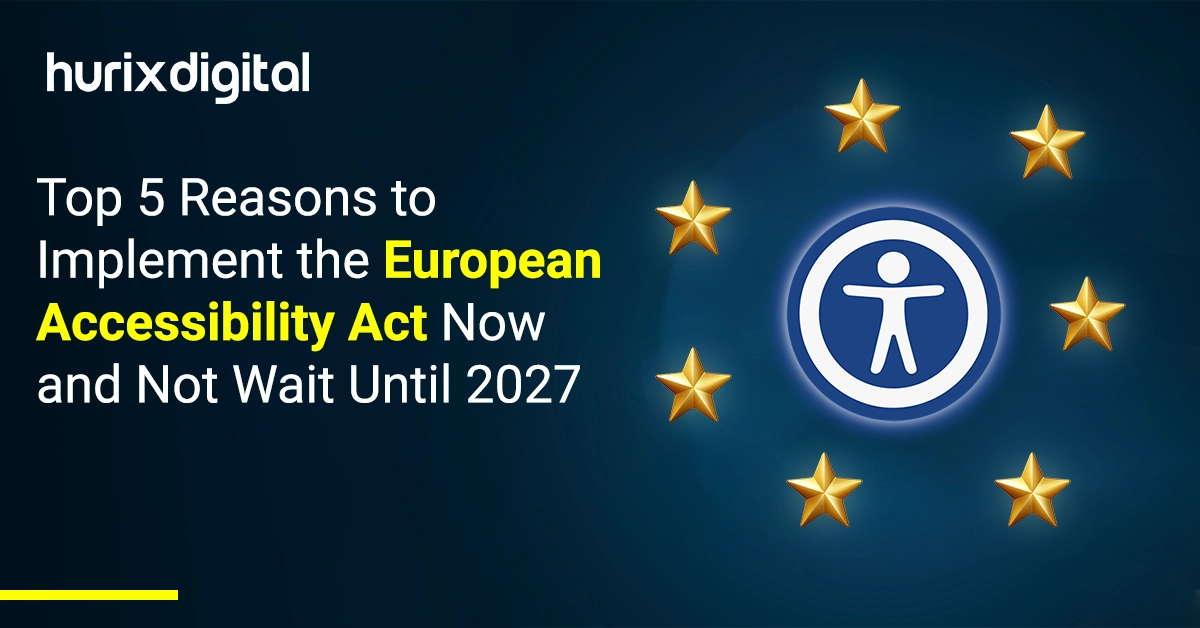
Top 5 Reasons to Implement the European Accessibility Act Now and Not Wait Until 2027
Summary
The European Accessibility Act 2025 marks a radical change in how companies across the EU handle accessibility. Although the compliance date seems far off, waiting till the last minute to apply the necessary changes could cause major difficulties and lost possibilities.
As the date nears, businesses need to make several changes, so starting early can streamline this process and give them a competitive edge. In this article, we will learn more about the European Accessibility Act and discuss the top five reasons to implement the EAA now instead of waiting until 2027.
Table of Contents:
- Understanding the European Accessibility Act and Its Urgency
- Top 5 Reasons to Implement European Accessibility Act Now
- Conclusion
Understanding the European Accessibility Act and Its Urgency
The European Union officially adopted the European Accessibility Act (EAA) in June 2019 as a historic measure to ensure that people with disabilities across Europe can access a wide range of goods and services.
By standardizing accessibility criteria across all EU members, the EAA seeks to ease compliance for companies operating across borders, creating a more inclusive market for consumers.
The Act covers digital platforms, cellphones, laptops, ATMs, eBooks, transit options, and more. It affects the public and private sectors, and businesses with more than ten employees or a turnover of more than €2 million must comply.
Deadline for Compliance
The EAA will become fully effective on June 28, 2025. By this date, all new goods and services launched in the EU must be completely compatible with the Act’s accessibility criteria.
Before this date, companies already on the market have until 2027 to make their current products compliant. Waiting till 2027 to meet these needs could hurt companies.
From this date, non-compliant companies will face penalties, which, depending on the severity of the infringement and the country of operation, could include significant fines and even jail time, underscoring the importance of meeting the 2025 deadline.
Furthermore, those waiting until the last minute to comply could discover that rushing to satisfy the criteria results in higher expenses and logistical difficulties.
Also Read: Key Data-Driven Accessibility Metrics for Better Progress Tracking and Resource Security
Top 5 Reasons to Implement European Accessibility Act Now
The following reasons show why it will be immensely beneficial to implement EAA compliance now instead of waiting:
1. Gaining a Competitive Benefit and Expanding Market Reach
Implementing the European Accessibility Act before the 2027 target offers a major competitive edge. The EAA mandates that all goods and services within the EU must prioritize accessibility.
Early adoption of these guidelines will help companies access a large market of over 135 million individuals with disabilities across Europe, as well as an aging population that progressively calls for easily available services.
Implementing the European Accessibility Act can improve brand reputation and help access a larger customer base. Businesses regarded as inclusive leaders are more likely to build customer loyalty and draw in fresh business that prioritizes accessibility.
This proactive strategy might help you establish a special market position by differentiating your company from rivals who could postpone compliance.
2. Avoiding Legal and Financial Penalties
Delaying adherence to the European Accessibility Act 2025 carries major financial and legal consequences. Apart from microenterprises with less than ten employees, the EAA is not only a rule but a mandate applicable to almost all companies operating within the EU. Ignoring the EAA could lead to fines, legal challenges, and a negative brand reputation.
Starting European Accessibility Act implementation now will allow companies to do extensive audits, pinpoint areas needing work, and start adjustments long before the 2025 target. From digital channels to tangible goods, this proactive strategy guarantees that every facet of your company is compliant and lowers the possibility of last-minute mistakes.
Other factors, such as financial consequences, also need to be considered. Early compliance allows one to use a phased approach, distributing expenses over time and avoiding rushed and expensive improvements.
3. Enhancing Customer Experience and Usability
The European Accessibility Act 2025 aims to improve usability for all users, not just those with disabilities. Accessible design always leads to better overall user experiences. For instance, features like easy navigation, accessible writing, and interoperability with many assistive devices can help everyone—not just those with specific needs.
Using the European Accessibility Act’s best practices, companies can improve their goods and services to increase consumer involvement and happiness. Ensuring websites are accessible via screen readers, for instance, benefits visually challenged visitors and enhances SEO, enabling everyone to locate your site more easily.
Including voice commands will help apps and devices be more user-friendly and appealing to a larger audience. Furthermore, easily accessible design can inspire ideas that would benefit every user.
For example, providing video materials with subtitles helps those with hearing difficulties and also increases the accessibility of the content for non-native speakers or noisy surroundings. These improvements provide a more favorable user experience, improve client retention, and increase conversion rates.
4. Achieving Long-Term Cost Efficiency
A common misconception is that implementing the European Accessibility Act will be unduly expensive. Although producing goods and services incurs upfront expenses, the long-term benefits significantly outweigh these initial costs. Early adoption of European Accessibility Act compliance benefits can result in significant long-term cost savings.
Early compliance has several financial benefits. It allows businesses to distribute expenses over multiple years. Starting early will help companies manage resources properly, preventing the need for costly last-minute overhauls.
Moreover, developing with accessibility in mind is usually more affordable than later retrofitting goods and services. This approach ensures accessibility is incorporated into the fundamental design process, thereby reducing the need for costly repairs.
5. Contributing to an Inclusive and Ethical Society
Adopting the European Accessibility Act enhances global inclusivity rather than only fulfilling a legal duty. The EAA aims to eliminate barriers for individuals with disabilities, enabling them to participate fully in society and access the same opportunities as everyone else.
Embracing the top reasons for early Accessibility Act implementation can help companies demonstrate a dedication to ethical business operations and corporate social responsibility. Customers, staff members, and partners who support equality and inclusion will find resonance in this strategy, which fits with general societal trends toward increased awareness and appreciation of diversity.
Companies prioritizing accessibility usually reap great benefits from early European Accessibility Act compliance, with increased consumer loyalty and brand reputation. Accessible businesses are more likely to attract and retain consumers who respect moral behavior, which can lead to long-term corporate success and greater market share.
Also Read: 7 Best Practices for Web Writers on Digital Accessibility
Conclusion
The European Accessibility Act 2025 marks a significant change in how companies around the EU approach accessibility. By complying with the EAA now instead of waiting until 2027, businesses can gain a competitive edge, minimize legal and financial concerns, improve the consumer experience, achieve long-term cost efficiency, and help build an inclusive and ethical society.
Hurix Digital provides tools for creating, implementing, and maintaining easily available learning solutions, ensuring your material reaches viewers inclusively and successfully.
Contact us today to learn more about creating accessible digital learning solutions.

Vice President – Digital Content Transformation. He is PMP, CSM, and CPACC certified and has 20+ years of experience in Project Management, Delivery Management, and managing the Offshore Development Centre (ODC).
